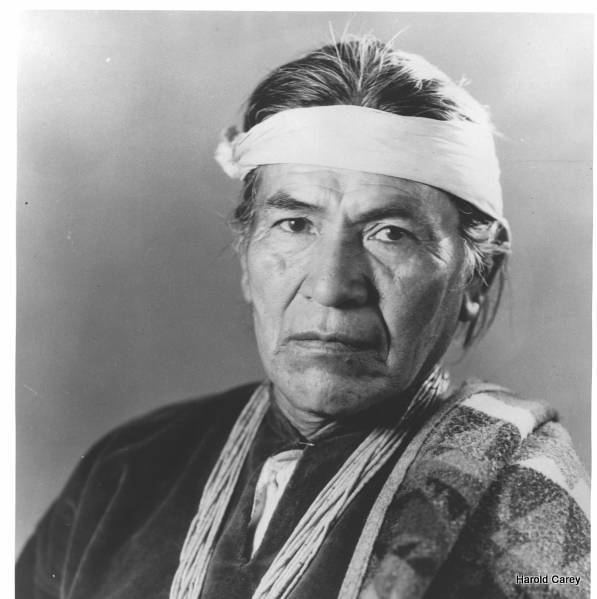Nationality American / Navajo Name Hosteen Klah | Role Artist | |
 | ||
Full Name Navajo: Hastiin Tlʼa, Aweeʼ ashkii Born 1867 Bear Mountain, near Fort Wingate, New Mexico Died February 27, 1937, New Mexico, United States | ||
Download Hosteen Klah: Navaho Medicine Man and Sand Painter [P.D.F]
Hosteen Klah (Navajo: Hastiin Tłʼa, 1867–1937) was a Navajo artist and medicine man. He documented aspects of Navajo religion and related ceremonial practices. He was also a master weaver.
Contents
- Download Hosteen Klah Navaho Medicine Man and Sand Painter PDF
- Background
- Gender
- Weaving
- Wheelwright Museum
- Death
- References

Background

Hosteen Klah, also spelled Hastiin Klah, was born in 1867 at Bear Mountain, near Fort Wingate, New Mexico. His name essentially means Sir Left Handed in Navajo; in his youth, he was called Ahway Eskay (Awééʼ ashkii). Hoksay Nolyae was his father and Ahson Tsosie, of the Tsétaaʼáanii Clan, was his mother. Klah was born after the Navajos’ return to their homelands from forced government internment at Bosque Redondo. Klah avoided attending government school; rather, he received training in the traditionally male realm of ceremonial practices (chanting and sandpainting) from his uncle. While most individuals master only one or two complete chants, Klah mastered at least eight.
Gender
Hosteen Klah is most commonly believed to be intersex. Klah was important to the development of Navajo weaving. Among the Navajo, weavers are typically women, and chanters (hataałii) are normally male. Hosteen Klah was both a weaver and a chanter. This was possible because of his particular gender status. Klah was a nádleeh (meaning "one who is transformed" or "one who changes"). A nádleeh could be born male, female, or intersex.
Weaving
Identified as a nádleeh in adolescence, Klah began his training in the traditionally female craft of weaving with his mother and sister in the 1880s. Klah wove his first complete weaving at the 1892–1893 World's Columbian Exposition in Chicago, where he was probably part of a sandpainting demonstration.

In 1916, Klah wove imagery from the Yéʼii bicheii dance into a rug. He incorporated more representations of Navajo religion into his weaving, including sandpainting imagery by 1919. This practice was regarded as sacrilegious by many Navajo traditionalists and is regarded as such by some Navajo people today.
Klah taught his two nieces both his weaving techniques and designs.
Wheelwright Museum
In 1921, Hosteen Klah was introduced to Mary Cabot Wheelwright, a Boston heiress. The two became friends and collaborated in founding the Wheelwright Museum of the American Indian in Santa Fe, New Mexico. Fearing for the future of Navajo religion after witnessing decades of assimilationist assaults on traditional culture by missionaries and the US government, Klah wanted to document Navajo religion and make it available for future generations. The museum was initially called the Navajo House of Prayer and House of Navajo Religion, but then renamed the Museum of Navajo Ceremonial Art, and ultimately renamed in 1977, when the museum repatriated sensitive cultural patrimony back to the Navajo Nation.
Death
Hosteen Klah died on February 27, 1937 from pneumonia, and he is buried on the grounds of the Wheelwright Museum.
